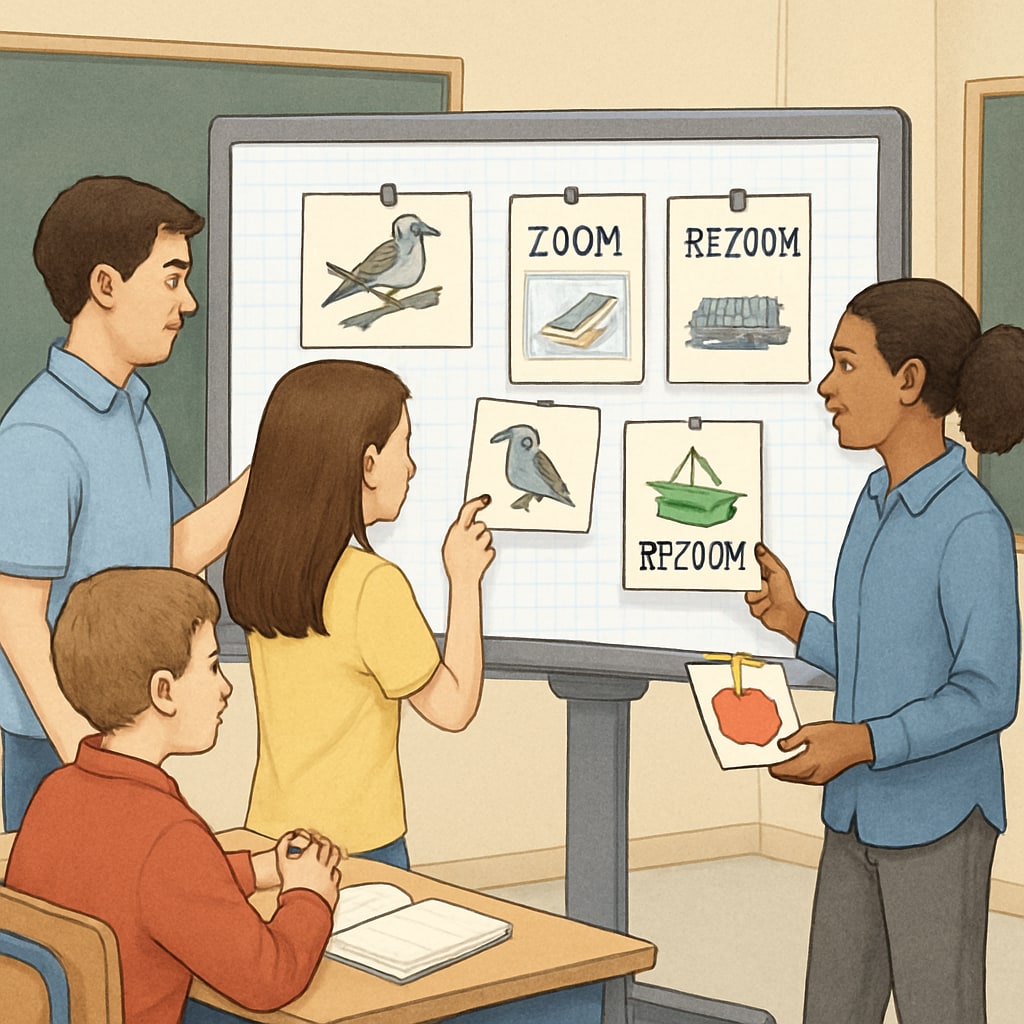Engaging students in active learning is a challenge many K12 teachers face. Activities like Zoom and ReZoom are excellent tools for fostering classroom participation and promoting deeper understanding. To use them effectively, it’s essential to master their correct sequence, practical strategies, and how to integrate the answer key. This article will guide educators through implementing these activities for maximum impact.
Understanding Zoom and ReZoom Activities
Zoom and ReZoom are visual sequencing activities designed to enhance critical thinking, teamwork, and communication skills. These activities involve students piecing together a coherent narrative or concept based on a series of images or content cards. The Zoom activity often begins with a close-up of an image, gradually zooming out to reveal the bigger picture. ReZoom reverses this concept, focusing on narrowing down from broad ideas to specific details.
Both activities are highly adaptable, making them suitable for diverse classroom contexts, including language arts, science, and social studies. Their structured nature also helps cater to different learning styles, such as visual and kinesthetic learners.

Step-by-Step Implementation: The Correct Sequence
To maximize the effectiveness of Zoom and ReZoom activities, following the correct sequence is crucial. Here’s how to implement these activities step by step:
- Preparation: Choose or create a set of images/cards that align with your lesson objectives. Ensure the sequence logically progresses for Zoom or regresses for ReZoom.
- Introduction: Explain the activity’s purpose and rules to the students. Highlight the importance of collaboration and logical reasoning.
- Activity Execution: Distribute the image cards randomly among students. Encourage them to analyze their cards individually before collaborating as a group.
- Sequencing: Students work together to arrange the cards in the correct order, identifying the connections between images or concepts.
- Debriefing: Review the completed sequence as a class. Discuss the reasoning behind the arrangement and how it ties into the lesson objectives.
Using the answer key during the debriefing stage can help validate the students’ work and provide further insights into the activity’s learning outcomes.
Best Practices for Successful Implementation
While the sequence is vital, certain best practices can further enhance the effectiveness of Zoom and ReZoom activities:
- Tailor the Content: Customize the images or concepts to match the specific learning goals of your class.
- Encourage Collaboration: Foster teamwork by creating small groups and assigning roles to each student (e.g., analyzer, connector, presenter).
- Integrate Technology: Enhance the activity with digital tools, such as interactive whiteboards or online collaboration platforms.
- Assess Engagement: Observe student participation throughout the activity to identify areas for improvement or further discussion.
- Follow Up: Use the completed sequence as a foundation for subsequent lessons or discussions, reinforcing the concepts learned.

Benefits of Zoom and ReZoom Activities in K12 Classrooms
Zoom and ReZoom activities offer numerous advantages for K12 educators and students, including:
- Enhanced Engagement: These activities actively involve students, making learning more dynamic and interactive.
- Critical Thinking Development: Students practice logical reasoning and problem-solving as they piece together the sequences.
- Improved Communication: Group collaboration fosters discussion and teamwork, essential skills for student development.
- Adaptability: The activities can be tailored to various subjects and grade levels, ensuring versatility in teaching strategies.
For educators seeking innovative ways to boost classroom engagement, Zoom and ReZoom provide a structured and impactful solution. By mastering their sequence and integrating best practices, teachers can create meaningful learning experiences that resonate with students across different learning styles.
Readability guidance: Use short paragraphs and lists to summarize key points. Incorporate images at strategic locations to visually support the content. Ensure smooth transitions between sections for better readability.


